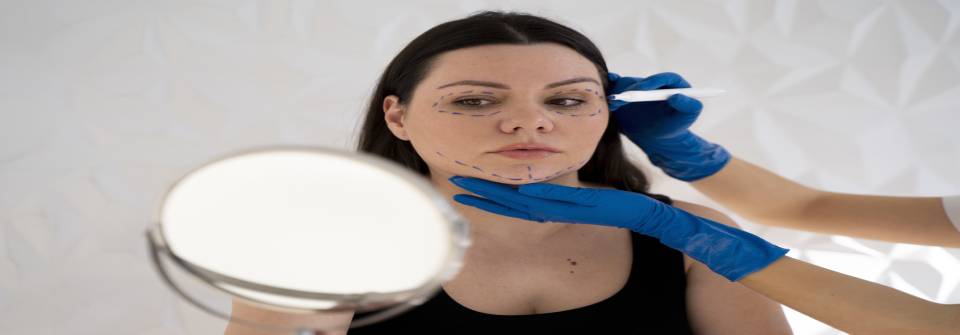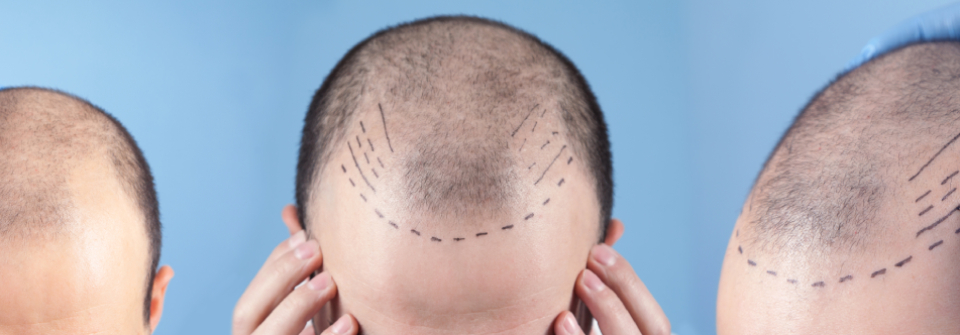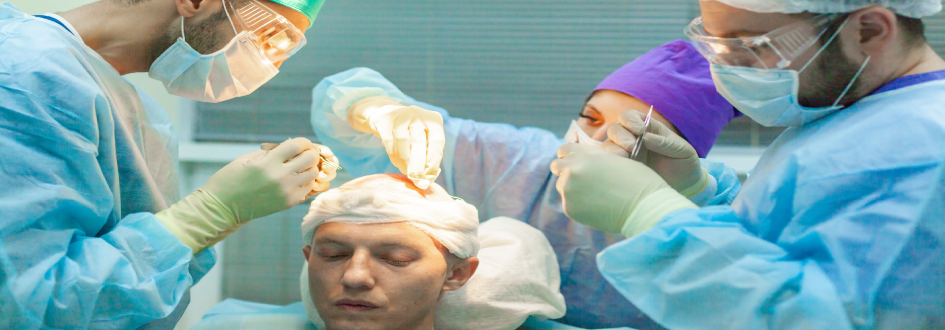
Exploring the Power of Resilience and Renewal in Breast Reconstruction
The process of breast reconstruction stands as an emblem of transformative and empowering journeys for numerous individuals, especially those who have braved the ordeals of mastectomy or breast surgery necessitated by cancer or other medical afflictions. This remarkable procedure is much more than just a physical intervention; it is the bridge between overcoming adversity and embarking on a new chapter of life.
Introduction to Breast Reconstruction: an emblem of transformative
In this fascinating intersection of art and science, the surgical precision and aesthetic vision of highly skilled surgeons merge with the cutting-edge advances of modern medical science. The goal is not only to restore the physical form but equally important, it aims to rekindle emotional well-being. It serves as a testament to the indomitable human spirit, enabling breast cancer survivors and those battling breast-related health challenges to regain their sense of self and reclaim their bodies.
This blog post takes a deep dive into the complex and enriching landscape of breast reconstruction. We will journey through the intricacies of the latest techniques, lifting the veil of the innovative scientific developments that have expanded the horizons of reconstructive surgery. We will navigate through the personal stories of patients, painting a vivid picture of their experiences, the emotional trials and triumphs, and the profound impact on their lives. Lastly, we will celebrate the incredible resilience and renewal manifested by those who have journeyed through this transformation. Their stories are not merely about survival; they are a beacon of hope, a celebration of life reborn.
The Evolving Landscape of Breast Reconstruction:
The progression of breast reconstruction over time is a remarkable journey, reflective of medical innovation and the commitment to improving patients' quality of life. From the initial techniques developed years ago to the contemporary practices we see today, a myriad of advancements have been realized. These span various surgical procedures, leading-edge implant technologies, and intricate tissue reconstruction methods.
In the past, surgical options for breast reconstruction were somewhat limited, often resulting in less than-optimal outcomes. However, as medical science has advanced, so too have the techniques and methods used. Today's surgeons have a myriad of options at their disposal, resulting in more successful and aesthetically pleasing results.
Implant technology has similarly evolved, providing safer, more durable, and more natural-looking choices. Contemporary implants are far more advanced, offering a range of sizes, shapes, and materials that can be closely matched to the patient's body type and personal preference.
Moreover, the progress in tissue reconstruction has been transformational. Surgeons are now capable of using a patient's tissue from different parts of their body for reconstruction, thereby enhancing the natural feel and look.
Importantly, these breakthroughs have not only broadened the options available to patients but have also made it possible to create more personalized treatment plans. Now, patients are able to participate more in the decision-making process, selecting options that best align with their individual needs and expectations. The evolution of breast reconstruction exemplifies a patient-centered approach in healthcare, leading to better outcomes and increased patient satisfaction.
The Artistry of Breast Reconstruction:
Breast reconstruction, a crucial part of the healing process for many, is far more than simply a medical procedure - it's an intricate craft that marries technical expertise with artistic vision. This process is not solely about the reconstruction of a physical attribute, but is an elaborate art form focused on sculpting a new piece of the body that's both aesthetically pleasing and natural in appearance. Successful reconstruction requires a keen eye for symmetry, proportion, and contouring to ensure the result harmonizes with the patient's unique body type and personal desires. Skilled surgeons don't just restore the form, they masterfully curate an outcome that resonates with the individual's sense of self, effectively weaving together medical knowledge, surgical skill, and an understanding of the human form's beauty. Through this, they accomplish the goal of creating perfectly proportioned, natural-looking breasts that reinvigorate the patient's confidence and body image.
Restoring Confidence and Emotional Well-Being:
Breast reconstruction serves a higher purpose than merely restoring physical appearance; it is a vital part of a patient's journey toward healing and emotional rejuvenation. The process often transcends the realm of the physical, profoundly affecting the emotional and psychological aspects of the individuals involved. By exploring the emotional impact of breast reconstruction on patients, we can better understand how this procedure empowers them to regain ownership of their bodies. After overcoming the intense adversities they have faced, often including a battle with cancer, reconstruction allows them to re-establish their self-confidence and self-esteem. This renewal of emotional well-being is just as important as physical recovery and is a powerful testament to their resilience and strength.
Personalized Approaches to Breast Reconstruction:
Breast reconstruction is a deeply personal journey, one that varies for each individual patient based on their unique circumstances, needs, and preferences. A variety of reconstruction options are available, each offering a different approach tailored to suit specific patient goals. For instance, implant-based reconstruction is a common option that involves the insertion of a prosthetic implant to recreate the breast mound. Alternatively, there's autologous tissue reconstruction, or flap surgery, where tissue is taken from another part of the body to create a new breast. In some cases, a combination of both methods is used for optimal results. Crucially, the selection of these procedures is not one-size-fits-all. Healthcare professionals carefully develop personalized treatment plans in consultation with the patient. The goal is not only to reconstruct the physical aspect but to ensure the emotional well-being of the patient, allowing them to regain their confidence post-surgery. Each patient's voice is central to deciding the best path forward.
Nipple Reconstruction and Areola Tattooing:
Nipple Reconstruction and Areola Tattooing represent a crucial concluding stage in the process of breast reconstruction, especially for patients who have undergone mastectomy or other breast surgeries. This meticulous procedure entails the reconstruction of nipples and the tattooing of areolas, aiming to imitate their natural appearance as closely as possible. Such procedures are an amalgamation of medical expertise and artistic craftsmanship, where surgeons utilize various techniques to design and implement a personalized approach for each patient. This final touch provides patients with a sense of completeness and finality, essentially concluding their challenging breast reconstruction journey. It's more than just physical recovery; it's an important step in psychological healing, helping patients reclaim their confidence and identity.
The Role of Support and Community:
Breast reconstruction following a mastectomy is a significant journey, one that shouldn't be embarked on alone. The role of support networks, including family, friends, dedicated groups, and the medical community, cannot be overstated. Emotional encouragement from loved ones can provide comfort and motivation, helping the patient navigate through the complexities of the process. Similarly, support groups offer a platform to share experiences and advice, instilling hope and positivity. The medical community, on the other hand, offers professional guidance, helping to ensure safe and effective recovery. Stories from previous patients underscore the strength and solace they found in these support networks, underlining their irreplaceable value. These examples serve as strong reminders that the path to recovery is not solitary but enriched by the presence and assistance of those around you.
Empowering Stories of Resilience:
Honor the indomitable spirit and resilience of breast cancer survivors, as well as those currently on their journey towards recovery through breast reconstruction. By sharing their compelling narratives, we offer a beacon of hope and encouragement. These triumphant stories trace the path of patients who have faced daunting challenges, embraced the adversity of their circumstances, and emerged on the other side stronger, bolder, and more self-assured. Their post-reconstruction transformation stands testament to their strength, providing inspiration and support to those walking a similar path.
Future Innovations and Advancements:
Looking ahead, the field of breast reconstruction stands at the precipice of significant breakthroughs that promise to reshape the patient experience and treatment outcomes. Researchers are relentlessly driving progress, pioneering innovative surgical procedures that promise improved efficiency and minimized invasiveness. Simultaneously, cutting-edge advancements in implant and tissue technologies, such as bioengineered implants and 3D-printed tissues, hold the potential to redefine personalization and improve patient comfort. With these exciting developments, we are moving closer to achieving optimal results in breast reconstruction that harmonize with each individual's unique needs and body. The future certainly holds immense promise for these transformative changes.
Concluding Thoughts: Embracing Renewal Through Breast Reconstruction
Breast reconstruction signifies a profound fusion of aesthetic artistry and advanced scientific methodologies. It provides a profound opportunity for individuals to regain control over their bodies, aiding them in the journey of self-love and acceptance, following the trials of their medical journeys. As the field progresses, the pioneering advancements promise to continually revolutionize and personalize the experiences of survivors of breast cancer and individuals facing breast-related health challenges. The strength and resilience exhibited by patients through their transformative journeys is a testament to human spirit that must be honored. Equally, the unwavering dedication and skill of surgeons, who weave this remarkable blend of art and science to facilitate the patient's healing and renewal, deserve celebration. Breast reconstruction truly stands as a beacon of hope, symbolizing a transformative process that offers patients a path towards self-renewal, healing, and the embracing of a renewed sense of identity.



















